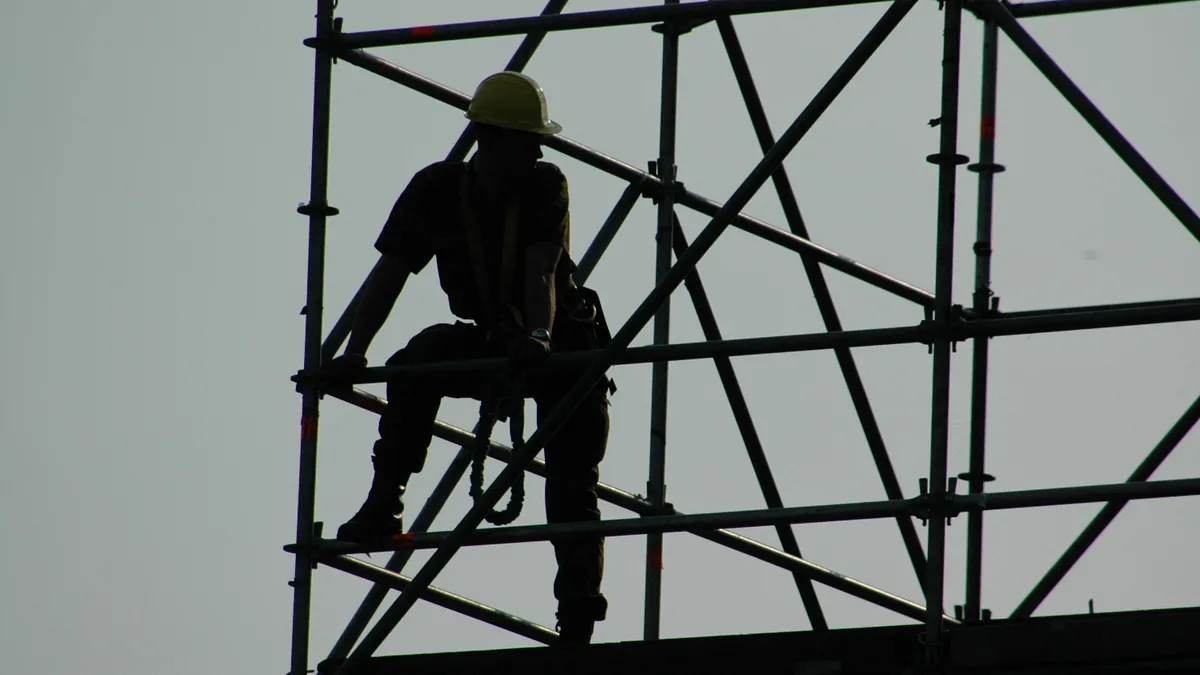Dive Brief:
-
Fall protection in the construction industry, specifically, led the Occupational Safety and Health Administration's annual list of the most commonly cited workplace safety violations, according to a preliminary ranking reported by the National Safety Council.
-
Four violations on this year's list are specific to OSHA's Part 1926 – Safety and Health Regulations for Construction), including inadequate fall protection, lack of guardrails for scaffolding, improper use of ladders and lack of fall-protection training, according to Business and Legal Resources.
-
The list is preliminary and the final version is due out in December, though it is not expected to change in the meantime. The category of Fall Protection – Training Requirements is new to OSHA's top 10 this year.
Dive Insight:
Fall protection has been of particular concern to OSHA as falls remain the leading cause of accidental death on construction sites. Of the 937 job site deaths reported in 2015, 350 were fall-related.
In an effort to increase job-site safety, OSHA has taken to levying significant fines in the case of certain violations, such as repeat offenses. In August, OSHA fined a Florida roofing contractor more than $1.5 million after repeated fall-protection violations. To reinforce the citation's severity, the agency also added the company to its Severe Violator Enforcement Program, under which it will be subject to extra monitoring and inspections.
Trench safety is another OSHA concern. Last month, the agency fined South Dakota contractor First Dakota Enterprises $95,000 for conditions that led to a non-fatal collapse. The worker, who was covered by debris as a result of the collapse, survived, but OSHA said the company did not provide the proper protection systems and inspections that could have prevented such an incident.
In addition to fines, OSHA has a history of issuing press releases detailing the related violations and the recourse to be taken against the companies facing the allegations. OSHA all but stopped sending out such releases after President Donald Trump took office in January, however.
Some in the industry maintain that this public "shaming" of contractors does little to increase safety. Others, like former OSHA official Jordan Barab, believe such publicity helps to spread the word about safety issues given the agency's relatively small inspection capabilities. Barab now hosts a blog about worker safety issues.












